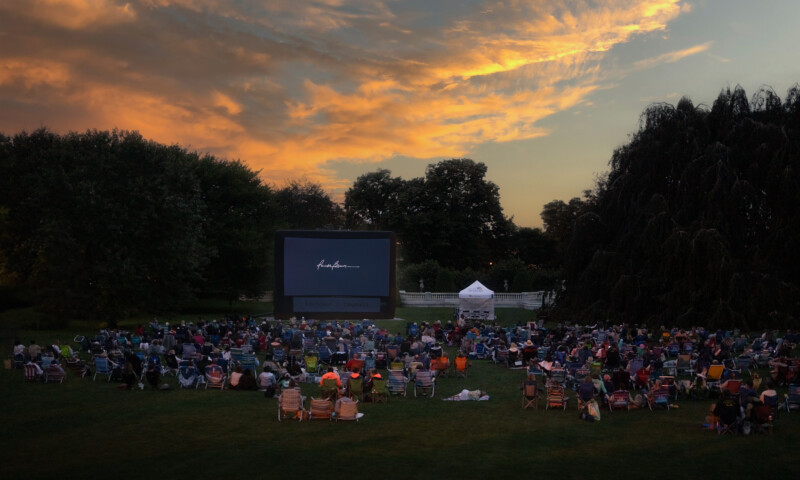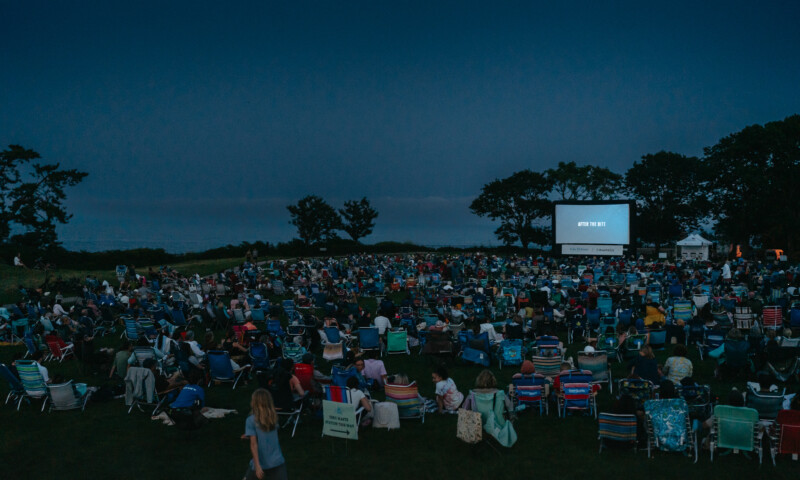
Where is America? How do we celebrate those places central to our understanding of ourselves, our communities, our country? That was my opening question last year when newportFILM screened The Apollo, a powerful new documentary celebrating how Harlem’s 125th Street Apollo Theater in New York City turned “a people into a community” despite the unending counter-current of race, discrimination, and inequality.
One long year later, newportFILM is offering this August 2020 a community screening of the newly-restored Jazz on a Summer’s Day (1959), a path-breaking documentary about the 1958 Newport Jazz Festival. It is a radiant film celebrating transcendent musical genius and the bursting joy of being alive in a tolerant, diverse, shared community. Jazz on a Summer’s Day is a national landmark, included in the United States National Film Registry by the Library of Congress. Now is a perfect time to revisit this classic independent film as we socially distance in contemplative pause and seek inspiration moving forward.
Jazz on a Summer’s Day is a remarkable film, often cited as the first concert film. But what led to this new genre? Broadly, this independent film distills 1950s cross-genre synergy among diverse communities of creative practice. The film’s musical director was George Avakian, Columbia Records’ jazz producer. His brother, Aram Avakian, edited the film and co-directed it with fashion photographer Bert Stern. All were in their thirties. The film has essentially no dialogue, with the story conveyed almost entirely through powerfully rendered music and image. Newport as a place has never looked so compelling as in this generous portrait. It’s hard not to come away with the impression that the Avakian brothers were central creative figures gathering talent and creating ravishing opportunities for magic to happen. In turn, their 1950s innovations built on the foundations of earlier stylistic advances. These include late nineteenth-century avant-garde Parisian artists who transformed leisure boating parties, earthy Montmartre nightlife, and the urbanity of city parks into a new kind of pulsing cosmopolitan vision. I wasn’t surprised to learn that Aram Avakian had been living in Paris until 1953, and attended the Sorbonne. Or, that he was a friend of the legendary portrait photographer, Robert Frank, described as “a modern-day de Tocqueville for his fresh and nuanced outsider’s view of American society”, and best known for his contemporary book of indelible portraits, The Americans (1958 France / 1959 USA).
The Newport Jazz Festival was started in 1954, and throughout the festival’s first decade the jazz producer George Avakian was committed to technically and aesthetically pushing the envelope of live recordings on the stage in Newport. He wanted to capture the fleeting, intense, unpredictable nature of a live performance and leave the listener breathless from the electricity between performer and audience. A keynote from this mission is his 1956 album, Ellington at Newport, recorded live at the Newport Jazz Festival and considered by George Wein as “the greatest performance of [Ellington’s] career… It stood for everything that jazz had been and could be.”
As a documentary film, Jazz on a Summer’s Day, expands the palette from a live album to a filmed concert experience. It is as radical in its own way as the French Impressionists who a century earlier took their paint brushes and easels out of the studio to invent plein-air modern painting. But now the media are film, time, and a live outdoor jazz performance by diverse, improvisation-loving musicians ready to let it rip in front of a very-present audience. As a calligraphic composition of compositions, Jazz on a Summer’s Day, is as electrifying today as it was in 1959.
To return to my opening questions: Where is America? How do we celebrate those places central to our understanding of ourselves, our communities, our country? Jazz on a Summer’s Day offers a vision of a renewed Newport that is innovative, diverse, creative, intimately quirky and forgiving as we come together in a moment of grace. The question in this divisive Pandemic Summer of 2020 is how can we come together again to create new radiant possibilities in the face of change? Who are the creators that will paint us the picture we are ready to see?
By Nancy Austin, PhD – newportFILM 2020 Humanities Blogger.
Nancy Austin is an educator, coach, and strategic research consultant helping shape stakeholder stories. Her Brown University PhD was on the entrepreneurial women who founded the Rhode Island School of Design. For decades Nancy Austin taught interdisciplinary courses at RISD, Yale, and WPI leveraging her broad background in science, math, art, architecture, and design. Her native STEAM orientation now includes advocacy around digital literacy and cybersecurity. With support from the Rhode Island Council for the Humanities.







